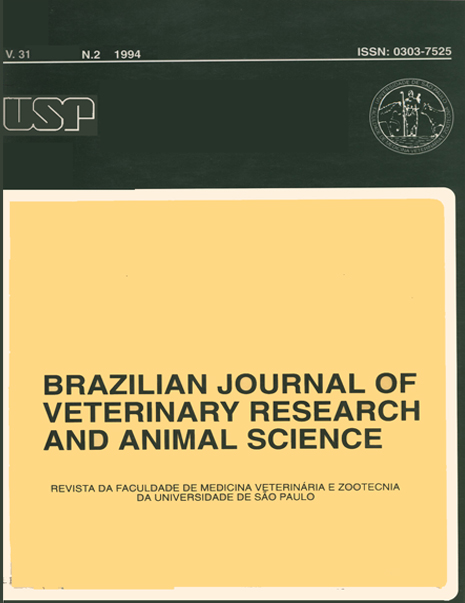Anatomical study of the ductus choledocus, ductus cysticus, vesica fellea and ductus biliferus principalis dexter in buffaloes
DOI:
https://doi.org/10.11606/issn.1678-4456.bjvras.1994.52056Keywords:
Buffaloes, Liver, Bile ducts, Gall bladder, vesica felleaAbstract
The constitution of the ductus biliferus principalis dexter, the ductus choledocus, the ductus cysticus and the vesica fellea were studied anatomically and radiologically in 40 Jaffarabadi, adult buffaloes, after latex Neoprene and Celobar injection of the biliary tract. The ductus choledocus did not have tributaries (97.5%), except in one case (2.5%), in which it received a tributary from the lobus quadratus. The choledochus was formed by the confluence of the ductus biliferus principalis dexter et ductus biliferus principalis sinister in 75% of the cases, (dorsomedial and ventrolateral roots). It was formed by the ductus biliferus principalis sinister (22.5%) and by the junction of the ductus hapaticus and the ductus cysticus in 2.5%. The ductus cysticus is a constant component of the ductus principalis dexter. It joins the ductus lateralis lobi dextri (67.5%). The vesica fellea does not show tributaries in 87.5% but in 12.5% receives hepatocystic ducts from the lobus quadratus (5%), from the lobus dexter and the lobus quadratus (5%) and from only the lateral territory of the lobus dexter (5%). The ductus biliferus principalis dexter is formed by the ductus lateralis lobi dextri and ductus cysticus (100%) and by the ductus medialis lobi dextri, ductus dorsalis and ductus processi caudati (92.5%).
Downloads
Downloads
Published
Issue
Section
License
The journal content is authorized under the Creative Commons BY-NC-SA license (summary of the license: https://





